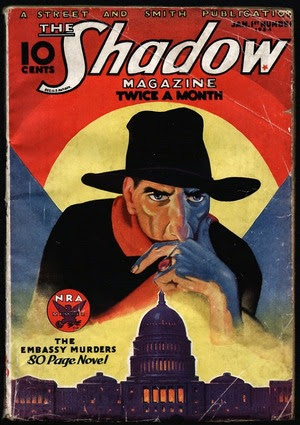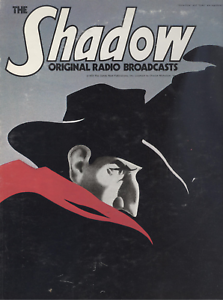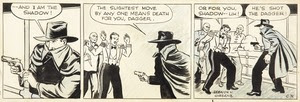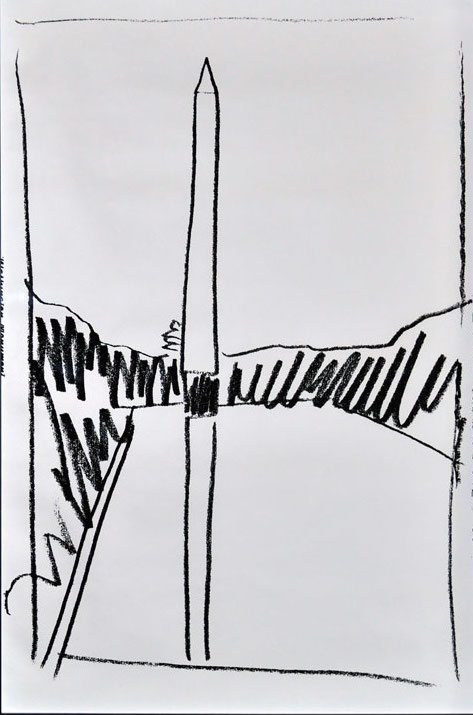
| Andy Warhol The Shadow, from Myths (FS II.267) 1981 Screenprint on Lenox Museum Board 38 x 38 in. Edition of 200 Pencil signed and numbered |
About the work:
As a keen observer of the emergence of America as the global superpower it is today, Andy Warhol captured deep American truths and fantasies. “Everybody has their own America, and then they have pieces of a fantasy America that they think is out there but they can’t see,” he once observed. Nowhere is this national fantasy clearer than in Warhol’s Myths Series of 1981.
The suite, composed of 10 iconic representations of recognizable figures of American film, history and culture encompass Warhol’s own life and the magic of 20th century American Pop Culture, or American Mythology. The term ‘Mythology’ (or ‘Myth’) often-times evokes the collected stories of the Ancient Greeks and Romans, however, Mythology is a feature of every culture. The collection of myths of any society defines its spirit and soul.
In the Myths Series, Warhol selected a range of 10 uniquely American personas, from Santa Claus to Uncle Sam, each artwork revealing facets of Warhol’s personality and desires. As a sick child, he was inspired by the duality of Clark Kent/Superman and famously wanted to be regarded as strong an american symbol as Mickey Mouse. Warhol so ardently wanted to be a part of American Mythology that he used his own self-portrait to take on the role of one of the characters in the Myths suite. Overtly self-referential, the artist placed himself among his idols.
This week’s Work of the Week! WOW! is The Shadow, from Myths, in which Andy Warhol used his own face to personify a fictional American icon.
While many of the referenced characters of the suite require no introduction, today ‘The Shadow’ is a more niche symbol of American Pop Culture. ‘The Shadow’ was a fictional pulp-novel character of the 1930’s, a crime-fighting hero of Warhol’s childhood. He wore a wide-brimmed black hat and a black, crimson-lined cloak with an upturned collar over a standard black business suit.
 The popular series was also adapted into a Radio Show and a comic strip during Warhol’s lifetime.
The popular series was also adapted into a Radio Show and a comic strip during Warhol’s lifetime.
 |
 |
The portrait is based on a photograph of Warhol as the fictional character and although he doesn’t wear The Shadow’s black cloak or broad-rimmed hat, the crimson lighting illuminating Warhol’s face, which references the red lining of The Shadow’s cloak, causes a strong shadow to be cast of his profile in the background. While peering at the viewer, Andy Warhol crafts a personification of himself masquerading as a hero.
Andy Warhol exhibited an unerring sense for the powerful motifs of his time – contemporary images that capture the modern imagination as completely as the gods and goddesses of ancient mythology once did. The images presented in Myths are nostalgic representations of America, each theatrically reflecting American fantasies, hopes, fears and dreams. Warhol gives these already established icons his signature pop-style treatment, inserting his own image into the narrative of pop culture.
The Shadow from Myths is a screenprint on Lenox Museum board with Diamond Dust covering the full sheet. The Diamond Dust, heavily applied, adds a luster to the work, but also lends to its mysteriousness, thus accentuating The Shadow. It its a very impressive work.


![[no title] 1967 by Andy Warhol 1928-1987](https://gsfineart.com/gallery-news/wp-content/uploads/2015/03/Marilyn-Monroe-25.jpg)

